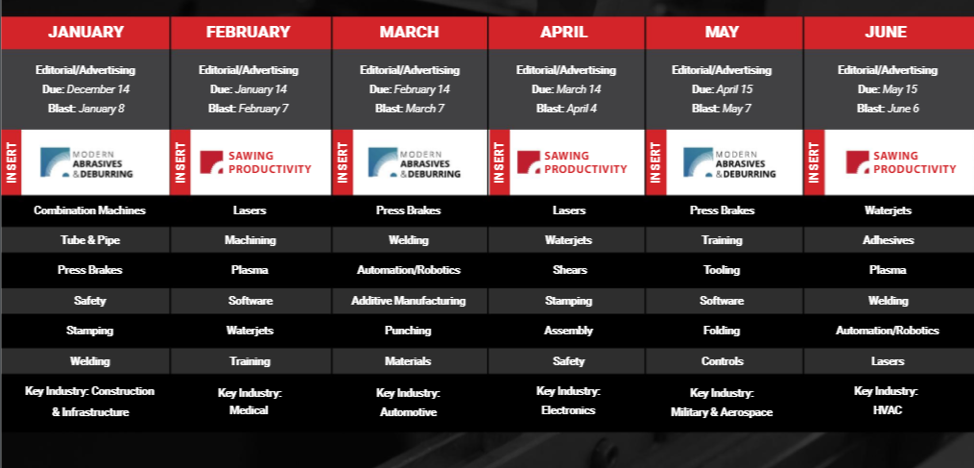How to Create a Company Magazine

How to Create a Company Magazine
Contributed ContentCompany magazines allow businesses to unify brand messaging, promote products, and engage different audiences. This article will outline how to produce a company magazine in 5 steps.
Updated June 1, 2023
Publishing a magazine for your business is a great way to grow brand awareness and thought leadership in your industry, as well as promote your business's products and services. Both print and online magazines can elevate your brand voice and help your organization connect with your audiences.
However, creating a magazine is a significant investment that requires intensive creative work. From developing content to designing images, creating layouts, choosing fonts, publishing, and promoting the magazine, they can be a lot of work.
Here is what you need to know to create your own company magazine.
How to Create a Magazine for Your Business
- Identify your magazine’s functions
- Build a production team
- Create an editorial calendar
- Outline a production process
- Maximize your content
Step 1: Identify Your Magazine’s Functions
Before production begins, identify the functions you would like your magazine to perform. We outlined some of the functions in Part 1 of this article, they include:
- Unifying a brand
- Promote products
- Engage audiences
Once you have decided on your magazines’ functions, you should begin assembling your production team.
Step 2: Build a Production Team
An equipped production team is essential for your magazine’s success. Some potential roles on your production team include:
- Editor-in-chief
- Art Director
- Graphic designers
- Regular column and feature writers
- Department heads and team leaders who could contribute topics or articles
- Proofreaders
- Marketing and PR professionals
One way to get free help publishing your magazine is to pitch the idea to a partner who has something to gain from helping you. You could offer potential partners free advertising in front of a shared target audience, for example, to reduce the financial burden of hiring new teammates.
Step 3: Create an Editorial Calendar
Once you have a team in place, start listing out your content topics and timeline. Decide how often you will publish – weekly, monthly, bi-monthly, or even annually – and begin to plan your content using an editorial calendar. An editorial calendar is an essential component of a successful content strategy.
An editorial calendar is a schedule of what content you will publish and when. In the example below, the editorial calendar includes topics for each monthly publication, as well as important dates and deadlines.

Editorial calendars include vital information for writers and other stakeholders and ensure the necessary work gets done on time and without slowing down any core business functions.
Make sure all stakeholders sign off on each of the provisional topics and any alterations before your calendar is finalized.
Editorial calendars also ensure that your magazine’s content is focused and consistent in each issue.
When creating your editorial calendar, make sure that the topics cover the talking points of your brand and speak to common employee, stakeholder and shareholder concerns.
Step 4: Outline a Production Process
After establishing an editorial calendar, get your graphic designer and editor to create a flowchart that outlines production for the new publication. Use the following formula and alter it until it matches your organization’s needs.
These 6 steps outline a basic production process that you can adjust to meet your company’s specific requirements.
- Confirm issue topics with stakeholders
- Distribute feature topics to the writing team
- Design a magazine cover
- Begin drafting and proofreading
- Create a magazine layout
- Submit final materials.
1. Confirm issue topics with stakeholders
Get the final go-ahead or make any last-minute changes before production starts. Sometimes, one or two stakeholders may have new information that should be reflected in the next issue.
2. Distribute feature topics to the writing team
Make sure everyone writing on a topic is an expert in that topic or willing to do research before writing. Encourage them to contact your editor with any questions or problems, and ensure your editor knows they will act as a resource for writers.
3. Design a magazine cover
Your cover is your chance to make a first impression on the reader. Engage your graphic designers and create mock-ups of potential covers, like the ones shown below.

You can see two different options for a magazine cover. Work with your team to decide who or what should appear on the cover.
Quick cover meetings can be a great opportunity for key stakeholders to give their input on magazine details. People can also vote on cover options in these meetings.
Make sure the editor and key stakeholders also get to vote on ideas, sketches, as well as the final cover.
4. Begin drafting and proofreading
Once your calendar and covers are in place, it’s time to begin the process of writing and proofreading.
Version control among a large team can be challenging. Use the Cloud to facilitate sharing of outlines and content.
Google Docs allows multiple permission levels and private invitations for commenters on your editorial or writing teams. Not everyone has time for this level of input, but it can really pay off.
Slack and Trello can help writing teams communicate and identify where each piece of content is in the writing process.
After each round of edits, share approved content proofs – a draft version of the content file – with proofreaders. The general rule is that when a proofreading round doesn’t produce new or significant issues, it’s time to stop.
5. Create the magazine's layout
Many layout designers use InDesign for both print and digital editions of the magazine. Doing so can allow easy transfer to web versions of print-ready files.
Make sure your graphics expert has a voice in the layout decision. Use Adobe layout tools and experienced professionals to create the final layout.
6. Submit final materials
Once the layout design team has transformed your vision into reality, review the final file. Final edits often require 3 proofing rounds.
Keep in mind that if the issue contains sponsored content, the sponsor will likely want to review and offer input on the content before the final proofreading.
Once final proofreading is complete, send the printer-ready files to the printer and send the digital-ready files to the digital team.
From here, the printer will make the print edition and the digital team will make the digital version in PDF form or a fully responsive magazine website.
Finally, select a printer that fits your budget, specifications, and expectations. If your magazine is colorful and glossy, for example, don’t send it to a newspaper printer or a local copier.
Step 5: Repurpose Your Content
The process does not end when your company magazine goes to print. Working with your team of PR experts, you can repurpose the magazine’s content for promotions and get the most out of your hard work.
Some ways you can repurpose your magazine content include:
Brochures, Mailers, and Handouts
The same team you assemble to do your magazine can help with brochures, direct mailers and even questionnaires for trade events. Your production team already knows your company’s talking points and they understand how to communicate your message.
Online Catalogs
If your company sells a product and has a print catalog, consider putting the products online to increase organic search engine reach. If you want your catalog to capture new customers, it pays to create a new website for the magazine to be indexed by search engines.
You can also use the magazine website to direct readers back to a company website, which can serve an SEO strategy.
Branded Swag
Many innovative tiny startups develop this mindset way before the profits roll in, however. The same team that knows the recurring issues for the company know best how to brand it, how to put it all in motion, and can even recommend the initial ideas for approval.
Follow These 5 Steps to Produce a Company Magazine
Company magazines unify your brand message and act as a resource for employees and stakeholders. Breaking the production process down into smaller steps can help you develop your own process for a company magazine.
By creating a content calendar, outlining the production process, and repurposing your content post-production, you will create a company magazine well worth the time and effort.
Additional Reading:
